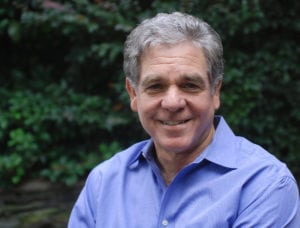Featured mediaXchange 2017 speaker
 Paul Taylor is the author of The Next America: Boomers, Millennials and the Looming Generational Showdown (PublicAffairs, 2014 and 2016).
Paul Taylor is the author of The Next America: Boomers, Millennials and the Looming Generational Showdown (PublicAffairs, 2014 and 2016).
The book draws on his work at the Pew Research Center. Prior to his work at Pew, he served as president and board chairman of the Alliance for Better Campaigns, a public interest group that sought to reduce the cost and improve the content of political campaign communication on television. Its honorary co-chairs were Walter Cronkite and former Presidents Gerald Ford and Jimmy Carter.
1. How did you get into media?
I worked for my high school and college newspapers. Reporting struck me as the best way to learn about people, issues, the world. And great fun to boot. My first job out of college was at the Twin City Sentinel, a (now defunct) afternoon paper in Winston-Salem, N.C. Back then there was nothing better than starting at a small town paper — you could get to the deep end of the pool mighty quick.
2. You wrote a book, The Next America: Boomers, Millennials, and the Looming Generation, on the looming generational showdown; how do you think the media industry is adjusting to millennials (both in the workforce and as readers) and what are the obstacles you see?
As we all know, millennials have their own distinctive media habits — with Facebook and other social media sites their main platform for news. These sites are aggregators, not journalists. Neither they nor the traditional media have yet come up with reliable mechanisms for verifying the information they curate and convey. A huge challenge, with no easy answers, for both news producers and consumers.
3. How has media changed since you’ve been in the business?
We’ve gone from a media world in which there were gatekeepers, a hierarchy, a food chain, a set of standards and a broadly agreed-upon menu of facts to one where anyone can be a content creator and news disseminator. This transition has fueled a gusher of creativity and energy. But it’s also led to ever more co-mingling of news, opinion and entertainment. And it has helped to create a public that wallows in personalized information silos, feasting on red truth or blue truth or post truth.
4. Can you give us a brief preview of your keynote for mediaXchange? What do you want the audience to walk away with?
I’ll be talking about the two demographic trends that are transforming the United States — we’re enroute to becoming a majority non-white country at the same time a record share of us are going gray. These shifts have fed the hyper-partisanship of politics and policymaking in recent years. But even as the American public grows more polarized, we’ve also become more comfortable with our new diversity. This makes for a complex story-telling challenge — but also a great opportunity for nuanced, explanatory journalism.
5. Where do you see the future of news media going?
I’m an optimist. Whatever our foibles, we humans need good information in order to identify problems and figure out solutions. So there’ll always be a market for great journalism. As for who provides it, using what kinds of business models, I don’t have a clue. Obviously we’re in an era of massive upheaval in the media ecosystem. I suspect it will continue for quite a while. And in the process, as we saw this past election year, the guardrails around what’s fact and what isn’t have become less sturdy. But this will eventually pass. Human nature will demand something better.
